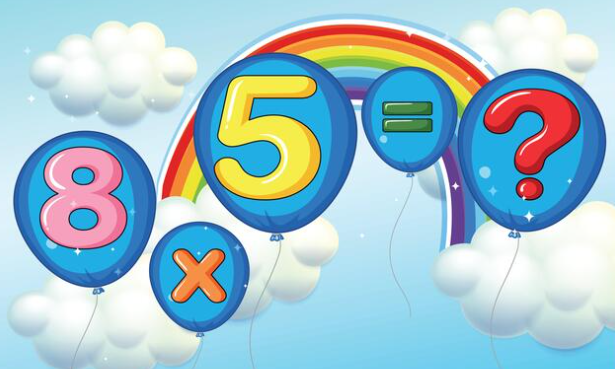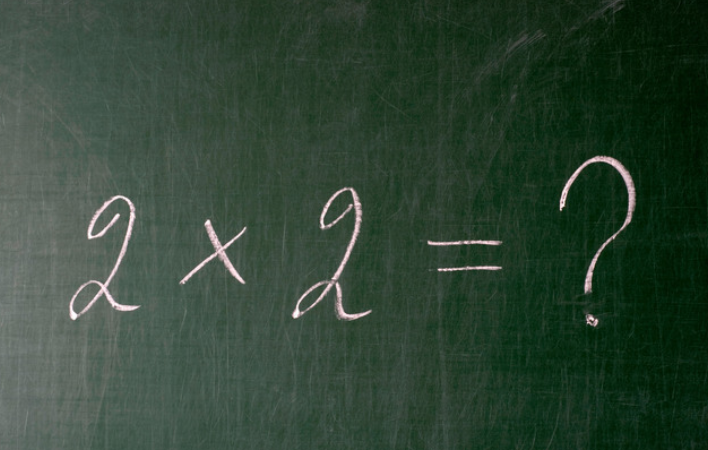Multiplication, a fundamental arithmetic operation, plays a pivotal role in shaping our mathematical comprehension. However, for students with dyslexia, navigating this numerical realm can present distinctive challenges. In this in-depth exploration, we set out on a comprehensive journey to unveil a range of carefully designed strategies tailored to accommodate the diverse learning styles of dyslexic students. Our objective extends beyond mere proficiency; we aim to transform multiplication into a realm of exploration and empowerment.

Check Out Our Free Multiplication Worksheets
Visual Aids: Embracing Colors and Shapes
Dyslexic students often excel in visual learning. Exploit this strength by introducing multiplication through a variety of colors and shapes:
- Color-Coded Charts: Immerse students in a visually appealing experience by creating charts where each number and its product are carefully color-coded. For instance, represent multiples of 2 with shades of blue, establishing a visually stimulating connection.
- Diagrams and Illustrations: Enhance the learning journey with diagrams and illustrations that bring abstract concepts to life. Visualizing the multiplication process through arrays or area models provides a tangible and vivid image, facilitating better comprehension.
- Interactive Digital Graphics: Embrace the technological era with interactive digital graphics that make multiplication a dynamic and engaging experience. Educational software and applications can offer immersive visuals, catering to the evolving needs of today’s learners.
Mnemonics and Rhymes: Integrating Sound and Memory Techniques
The realm of mnemonics and rhymes transforms multiplication into an engaging experience, leveraging sound and memory:
- Catchy Phrases: Encourage students to create memorable phrases for each multiplication table. Mnemonic devices, similar to “My Very Educated Mother Just Served Us Noodles” for planetary order, can be adapted to anchor multiplication facts in memory.
- Rhymes for Retention: Infuse the magic of rhymes into the learning process. Develop rhythmic verses that traverse multiplication facts, imprinting them in memory with an enjoyable cadence.
- Interactive Musical Learning: Engage auditory senses with interactive musical learning experiences. Turn multiplication tables into musical compositions, turning a potentially daunting task into an enjoyable endeavor.
Hands-On Manipulatives: Embracing Tactile Learning
The world of tactile learning unfolds with hands-on manipulatives, creating a tactile experience for dyslexic learners:
- Counting Beads and Blocks: Introduce counting beads or blocks, allowing students to physically manipulate objects while grasping the concept of multiplication. Visually grouping these objects represents multiplication, transforming the learning experience into a tactile adventure.
- Tactile Number Cards: Craft number cards with varying textures, offering a tactile journey through numerical exploration. Students can touch and feel the numbers, associating sensory experiences with mathematical concepts.
- Three-Dimensional Models: Elevate tactile learning with three-dimensional models that bring multiplication to life. Physical representations enhance understanding by providing a tangible and interactive experience.
Storytelling and Word Problems: Contextualizing Mathematical Concepts
The narrative unfolds as storytelling and word problems are seamlessly integrated into the fabric of multiplication education:
- Narrative Scenarios: Immerse students in a world of narratives where characters grapple with multiplication challenges. Develop stories involving sharing items equally, introducing division as the natural counterpart to multiplication.
- Real-World Context: Bridge the gap between abstract concepts and real-world scenarios. Craft word problems rooted in practical situations, enabling students to apply mathematical knowledge to everyday challenges.
- Collaborative Storytelling: Foster collaborative storytelling, allowing students to actively participate in creating multiplication narratives. This approach enhances engagement and encourages a deeper understanding of mathematical concepts.
Breaking It Down: Simplifying Multiplication
Breaking down the complexity of multiplication into manageable parts forms the cornerstone of our pedagogical approach:
- Chunking Method: Divide larger multiplication problems into digestible chunks. For instance, when faced with the challenge of multiplying 47 by 6, break it down into (40 x 6) + (7 x 6), simplifying the process and fostering a systematic approach.
- Partial Products: Emphasize the power of partial products. Encourage students to multiply each digit individually before combining the results, transforming multiplication into a step-by-step journey.
- Mathematical Symphonies: Introduce the concept of mathematical symphonies, where each step in the multiplication process contributes to the overall harmony of understanding. Emphasize the interconnectedness of numerical operations, fostering a holistic approach.

Take a Look at Free Printable Multiplication Times Tables
Technology Integration: Harnessing Interactive Tools
The modern era witnesses the integration of technology, orchestrating interactivity in the multiplication learning experience:
- Educational Gamification: Explore the realm of educational gamification, infusing multiplication drills with elements of play. Gamified apps provide a dynamic and adaptive platform, catering to individual learning paces.
- Virtual Reality Learning: Step into the immersive world of virtual reality (VR) learning experiences. Virtual environments offer a captivating space for dyslexic learners to explore multiplication concepts in three-dimensional landscapes.
- Online Collaborative Platforms: Embrace the collaborative spirit of online platforms. These platforms not only facilitate personalized learning experiences but also foster a sense of community, allowing students to engage in shared mathematical explorations.
By weaving together this array of diverse strategies, educators can orchestrate a comprehensive and adaptive approach to teaching multiplication for dyslexic students. This transformative journey aims not only to impart mathematical knowledge but also to instill a lifelong love for learning within each student. Embracing the unique strengths and learning styles of dyslexic individuals, we create an education experience where every note contributes to the beautiful melody of understanding and empowerment.